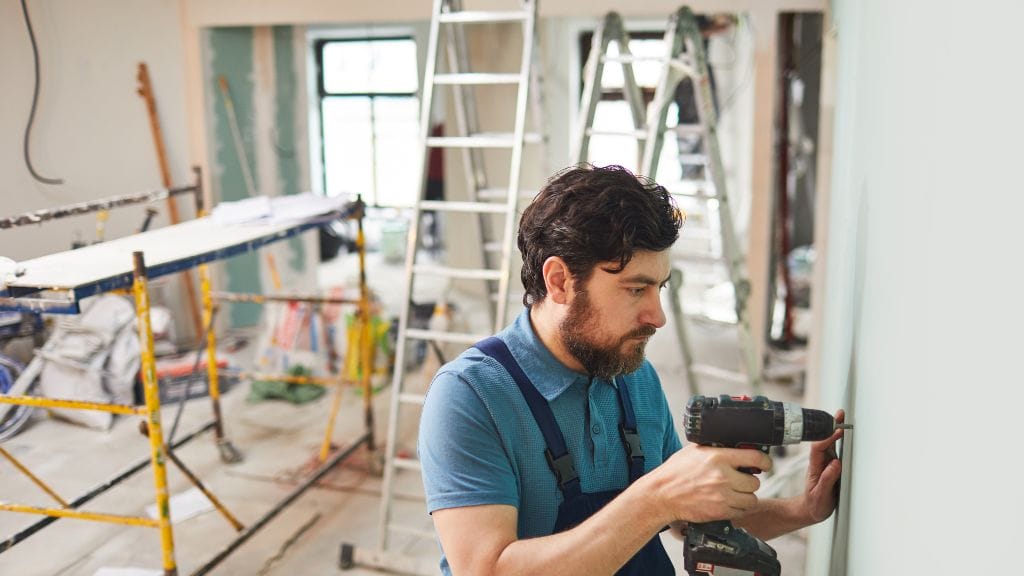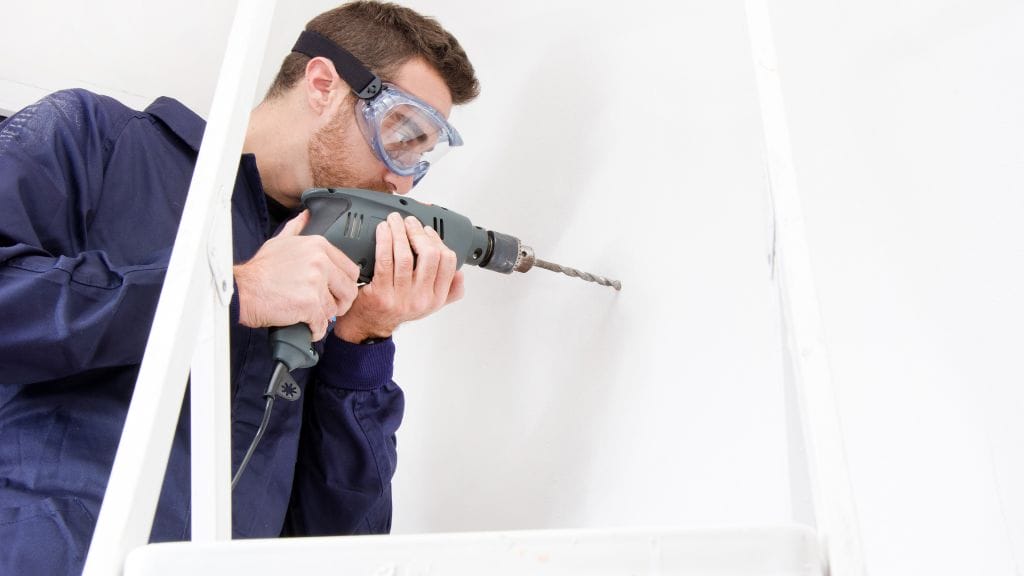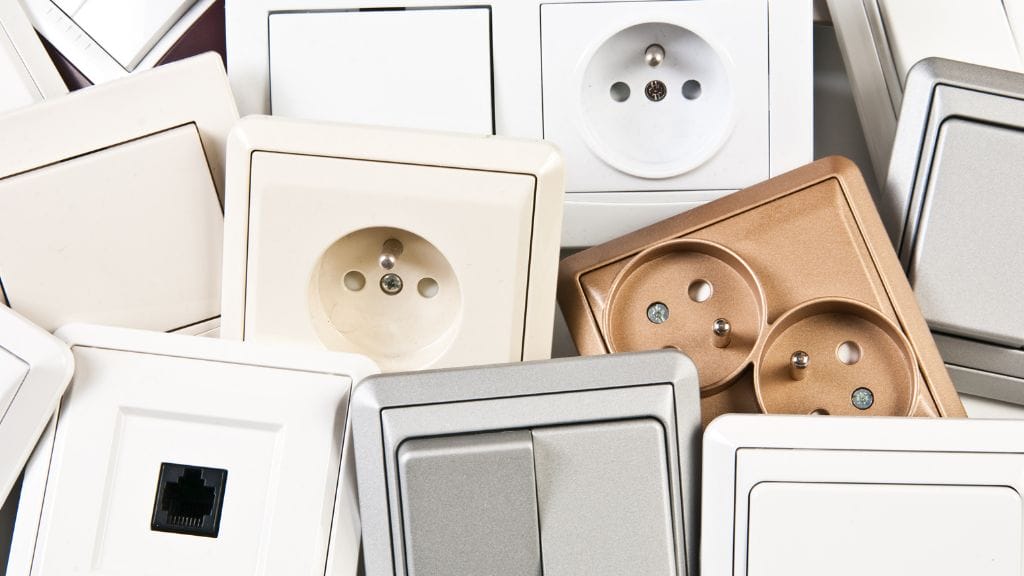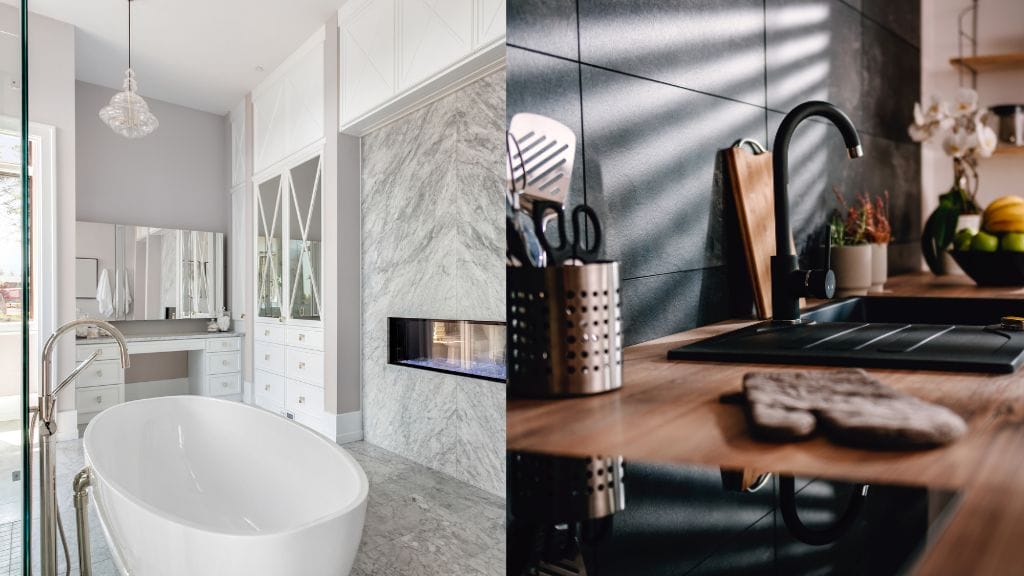
When you live in an older house there are a lot of things you can’t do. The house may have a lot of character but it also can be a pain in the neck to live in.
Some things you have to live with. One of those things is the weird electrical layout.
Unlike a new house that has all the modern conveniences, older houses were built with a lot of separate circuits that serve one purpose. And sometimes, you just can’t drill into the wall.
There are many reasons why you can’t drill into walls. Walls are built to support weight and to last.
Metal studs are sandwiched between the drywall. Nails and screws attach the drywall to the studs.
Help! Can’t get drill bit through wall anywhere

When you’re trying to put up a new shelf or a piece of art on your wall, it can become frustrating when you can’t get your drill bit through. This is a problem that people often run into, but one that is easy to solve.
While the process of drilling into a wall may seem simple at first, it requires a lot of strength and precision to make holes that are sharp and even.
The first thing you need to know if you’re wondering why you can’t get your drill bit through your wall anywhere is that you should always wear safety goggles when you’re trying to drill through a wall.
I know it sounds obvious, but trust me, I know at least three people who have gone blind from trying to drill into a wall. To begin,
- You need to use a drill bit to bore a hole through the wall. It’s important to make sure the bit is long enough to reach the wall studs from inside the wall cavity. If it’s too short, the drill bit can damage the drywall or even break through the opposite wall. The correct length varies depending on the type of wall material, so make sure to read the instructions carefully. If the wall is particularly thick, it may be necessary to adjust the depth of the drill bit.
- Now, in order to get your drill bit through the wall, you have to find a soft spot. This is usually the spot where there is no stud or joist on the wall. If you look closely at the wall, you’ll notice that there are a lot of small cracks and holes, but one of them will be big enough to fit the drill bit. In order to find the soft spot, you have to feel around the wall for a spot that doesn’t feel like the other part.
Also, you should know that it is highly unlikely you will be able to drill into the center of a stud if you are using a handheld drill.
That’s because studs are installed on 16” centers, so there’s not a lot of empty space between them.
Sure, you could measure and mark the studs, but if you’re like us, you’ve never done that, and are not about to start now.
It might be tempting to just drill through the drywall without a stud finder and just hope that the hole will hit the stud, but don’t do it! You could end up drilling into electrical wiring or a water pipe.
Check Before You Drill

If you have ever tried to drill into a wall, you will know that it is a scary task that requires a lot of caution.
Glue dropped on the wrong place could ruin the entire wall and that’s just the start.
Planning out where to drill is a difficult task too. You can’t just go in blind or you might go through the wall and end up in your neighbor’s house.
It’s not something you want to rush either because you’ll want to make sure you’re doing it right.
A drill bit will create a hole in the wall, but it can also make a lot of mess and it will require a lot of work to fill in the hole and make the wall look as good as new.
Do you plan on installing new shelves or installing a new chandelier to your house? It’s important to check the walls before you make a hole.
This will help you avoid drilling through an electrical wire, water pipe, or gas pipe.
Pay attention to light switches and sockets

It’s easy to assume that light switches are not vital to a structure’s integrity and that they can be safely drilled through without any issues.
However, nothing could be further from the truth. A light switch may be small, but that doesn’t mean its impact on the rest of a house’s structure is minimal.
A light switch is mounted to a wall stud, which means that if you drill through a light switch, you’re potentially weakening the wall above it.
Be careful with walls that connect to your bathroom or kitchen
When you are replacing your floor or wall, be careful with drilling walls that connects to your bathroom or kitchen.
You never want to drill through a pipe, wiring, or plumbing when you are installing a new wall or floor.

You don’t want to drill through a gas pipe or a hot water pipe. So, if there is any chance that you will drill through a pipe or a wire, put a layer of plastic or a layer of wood between the wall.
In Conclusion
If you are going to be drilling a hole into the wall, it is important that you are careful and precise. The first thing that you are going to want to do is figure out where you want to drill. This isn’t as easy as you might think. Your first instinct is going to be to just start drilling. But this could be a big mistake.
The location that you choose for the hole is going to have a big influence on how it looks when you are finished. So give yourself some time to choose the best possible spot. Make sure you have the right kind of drill bit for the job. The most common is a masonry bit, which is ideal for drilling brick, block, and stone. You’ll also need a hammer drill, which is built for drilling through concrete. Make sure you have a good source of water in case your drill bit gets hot, and always use eye protection.
